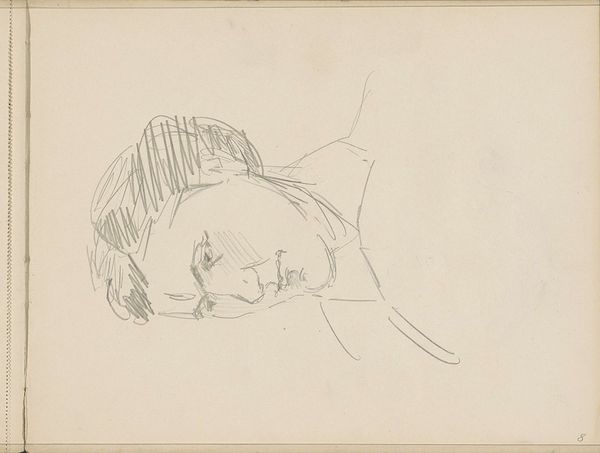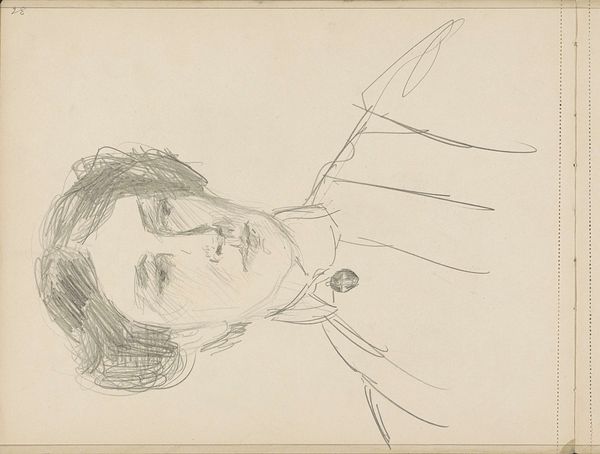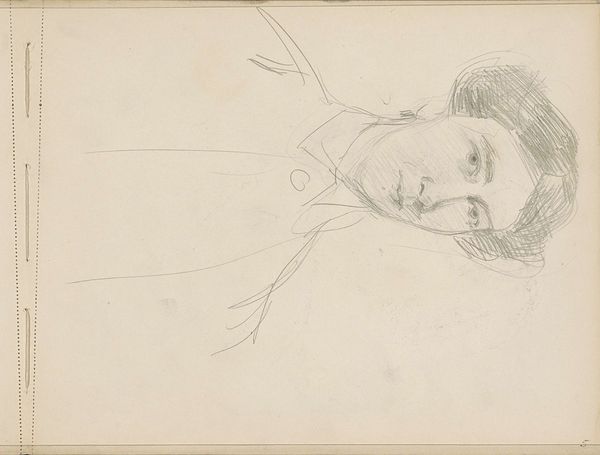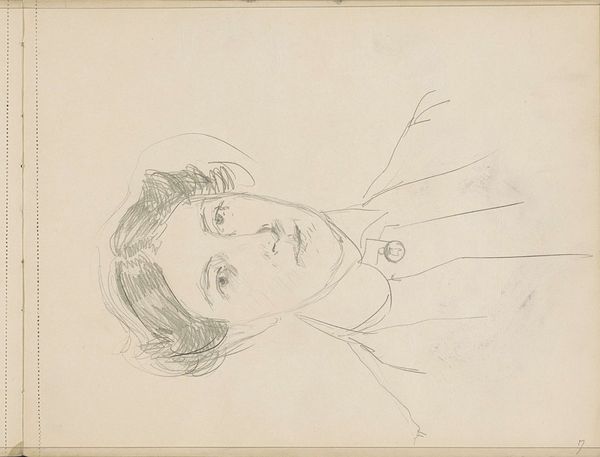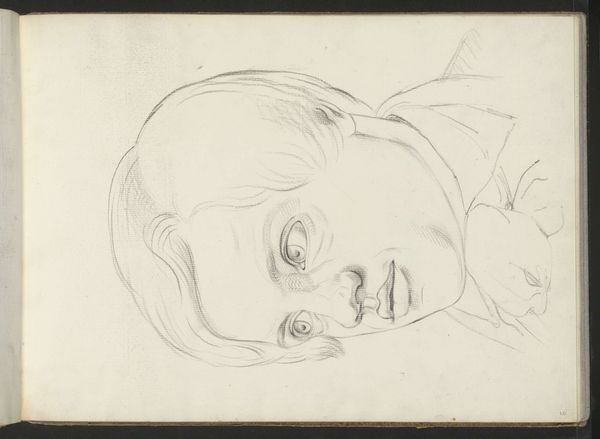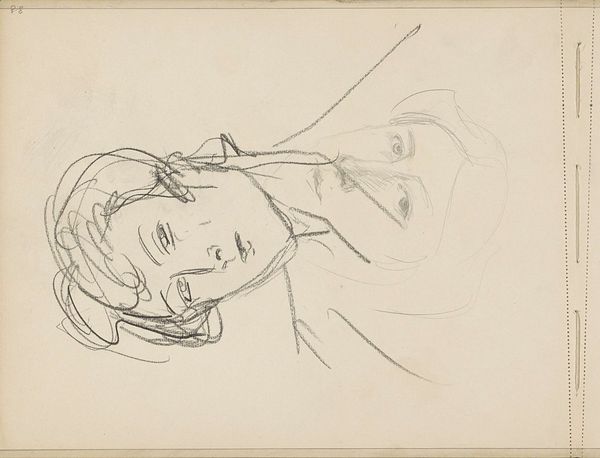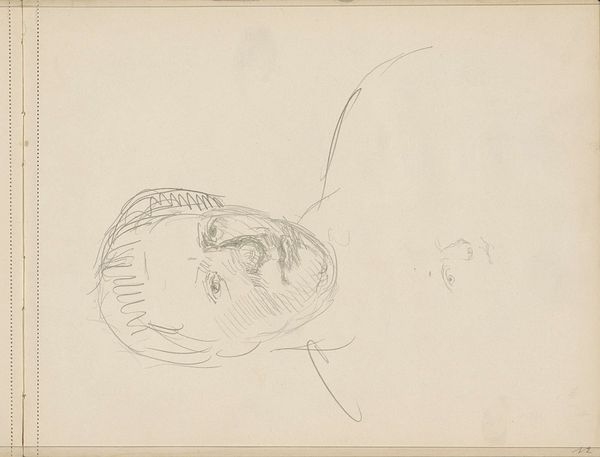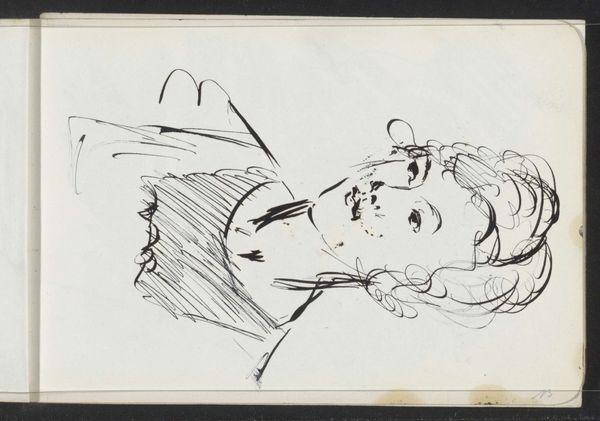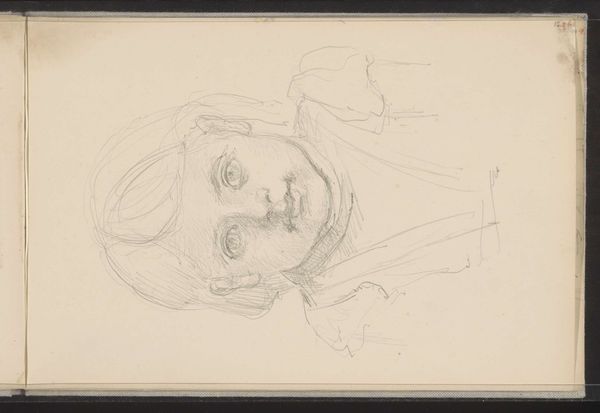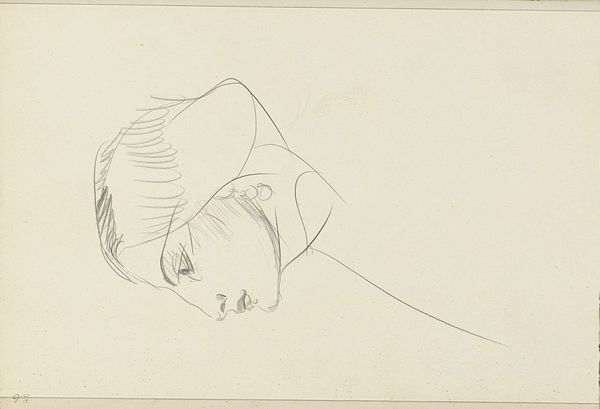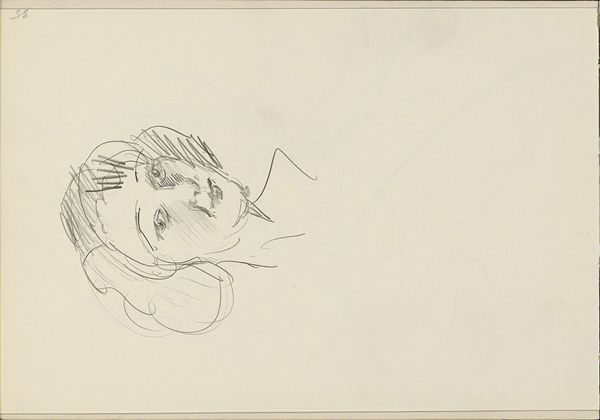
Copyright: Rijks Museum: Open Domain
Editor: Here we have "Vrouwenhoofd," or "Head of a Woman," a pencil drawing by Isaac Israels, likely created between 1875 and 1934. It has such a delicate, fleeting quality. What strikes me is how unfinished it feels. How do you interpret this work? Curator: It’s interesting you pick up on that feeling of incompleteness. Consider the Impressionist movement, of which Israels was a part. Artists were becoming less interested in creating polished, finished pieces, and more interested in capturing a moment, an impression. In its historical context, the “unfinished” quality could be seen as a rejection of academic tradition, a conscious choice to prioritize the artist's immediate experience over meticulous detail. Think about the role of the art market too – were quick sketches becoming more marketable as art became more democratized? What do you make of that negative space surrounding the drawing? Editor: It does draw your eye right to the face, as if isolating her. Do you think that was deliberate, a commentary perhaps on the isolation of women in that era? Curator: Possibly. The sparseness could reflect societal constraints placed upon women. Or perhaps the focus is purely on capturing the individual. But it raises questions about representation and the male gaze – who was this woman? Did she have agency in being depicted? These are questions we constantly grapple with when interpreting historical portraiture. How might our interpretation change if we knew more about her? Editor: It really brings home the importance of knowing the social context. Thanks, I’ve learned a lot. Curator: Likewise. It reminds us how artworks act as historical documents reflecting both artistic intention and broader societal forces.
Comments
No comments
Be the first to comment and join the conversation on the ultimate creative platform.
